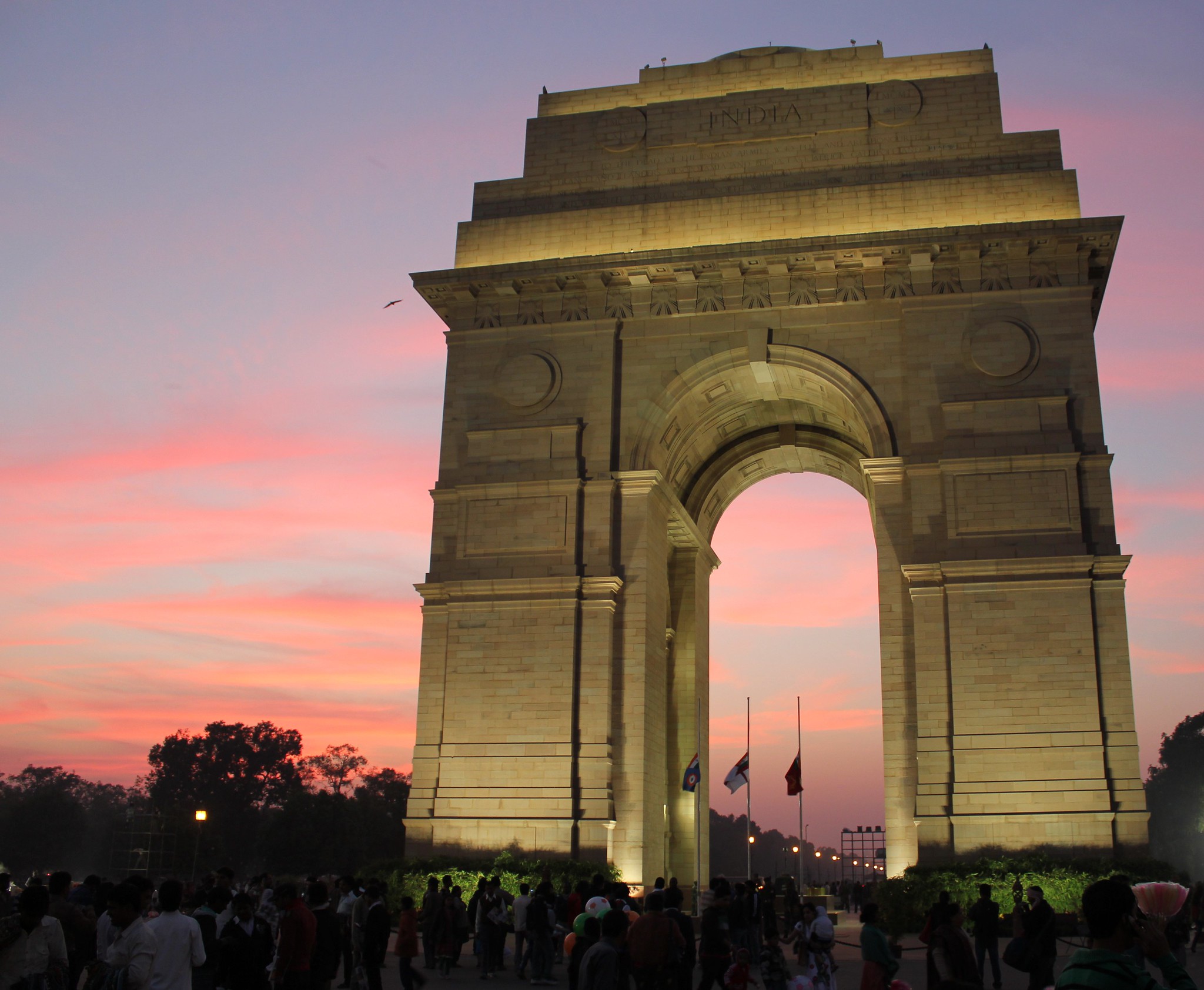India Gate is a prominent war memorial located in New Delhi, India. Designed by Sir Edwin Lutyens, this 42-meter-high arch was built in 1931 to honor the Indian soldiers who died fighting for the British Army during World War I and the Third Anglo-Afghan War. The monument features the names of over 13,000 soldiers inscribed on its walls. Situated at the eastern end of Rajpath, India Gate serves as a popular tourist attraction and a symbol of national pride. The structure is surrounded by lush lawns and fountains, making it a favored spot for locals and visitors alike, especially during evenings when it is beautifully illuminated.
India Gate, an iconic monument standing tall in the heart of New Delhi, has been a symbol of national pride and remembrance for nearly a century. This majestic arch, reminiscent of the Arc de Triomphe in Paris, was designed by Sir Edwin Lutyens and completed in 1931. Originally conceived as a memorial to the Indian soldiers who lost their lives fighting for the British Empire during World War I, the structure has since evolved to represent much more in the collective consciousness of the Indian people.
The construction of India Gate began in 1921, a time when the British Raj was still firmly in control of the subcontinent. The monument was part of the larger plan to build a new administrative capital for British India in Delhi, moving away from Calcutta. As the centerpiece of what is now known as Rajpath, India Gate was envisioned as a grand tribute to the sacrifices made by Indian troops in various conflicts, including the Third Anglo-Afghan War.
Standing 42 meters high, the arch is made of red and pale sandstone and granite, materials that give it a distinctive appearance against the backdrop of New Delhi’s skyline. The names of over 13,000 soldiers who died in battle are inscribed on its walls, a somber reminder of the human cost of war. Beneath the arch lies the Amar Jawan Jyoti, or the Flame of the Immortal Soldier, which was added after India gained independence. This eternal flame, lit in 1971, pays homage to the unknown soldiers who have given their lives for the country.
Over the years, India Gate has become much more than a war memorial. It has transformed into a popular gathering spot for locals and tourists alike, especially during the cooler evening hours. The sprawling lawns surrounding the monument are often filled with families enjoying picnics, children flying kites, and vendors selling ice cream and snacks. This juxtaposition of solemn remembrance and joyful recreation speaks to the monument’s ability to bring people together and serve as a living part of the city’s fabric.
The significance of India Gate extends beyond its role as a memorial and public space. It has become a powerful symbol of India’s journey from colonial rule to independence and its emergence as a sovereign nation. The monument features prominently in many national celebrations, including the annual Republic Day parade, where it serves as a backdrop for displays of India’s military might and cultural diversity.
In recent years, India Gate has also been at the center of various social and political movements. Its central location and symbolic importance make it a natural gathering point for protests and demonstrations, highlighting its ongoing relevance in the national discourse. The monument has witnessed everything from candlelight vigils for victims of violence to mass rallies calling for social change.
As New Delhi continues to grow and evolve, India Gate remains a constant, bridging the past and present. Its enduring presence serves as a reminder of the sacrifices made by previous generations and the values that continue to shape the nation. For visitors and residents alike, the monument offers a moment of reflection on India’s complex history and its aspirations for the future.
In essence, India Gate stands not just as a physical structure but as a living testament to the spirit of a nation. It embodies the memories of those who have fallen, the resilience of those who have persevered, and the hopes of those who continue to build on the foundations laid by their predecessors. As such, it remains an integral part of India’s national identity, a landmark that continues to inspire and unite people from all walks of life.
India Gate stands as an iconic symbol of national pride and remembrance in New Delhi. This majestic war memorial honors the sacrifices of Indian soldiers who died in World War I and other conflicts. Its imposing architecture, inspired by the Arc de Triomphe in Paris, serves as a popular gathering place for locals and tourists alike. The eternal flame beneath the arch, known as Amar Jawan Jyoti, further emphasizes its significance as a tribute to India’s fallen heroes. As a prominent landmark and testament to India’s history, India Gate continues to play a vital role in the country’s cultural and patriotic identity.

